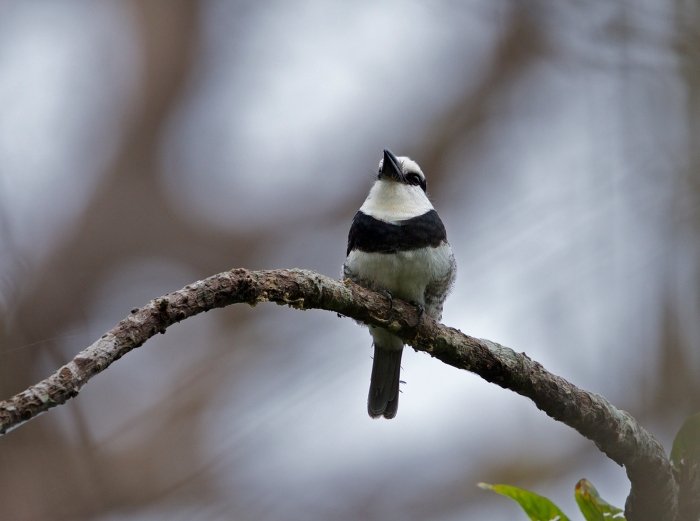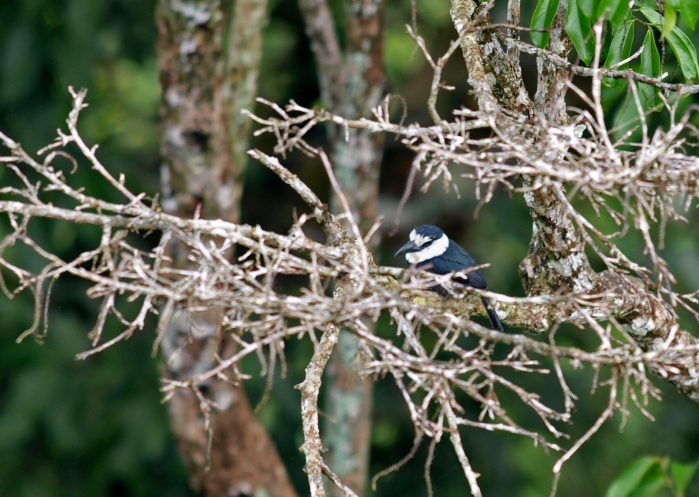Return of Bird of the Week: White-necked Puffbird
WC has a few more photos of Puffbirds, but none of them are going to win any prizes for quality. Still, the birds are interesting enough that WC will share the mediocre documentation photos, with apologies for the sub-standard quality.

White-necked Puffbird, Darién, Panama
Here’s a White-necked Puffbird, a species found from southern Mexico to Peru and much of Brazil. It’s one of the largest of the Puffbirds, and likely has the largest bill. It’s fairly uncommon across its entire range. Unlike its cousins you’ve met so far, this is generally a canopy bird, harder to find and photograph. This photograph is taken against the cloudy sky in Darién Province, in western Panama. This is probably the subspecies hyperrhynchus.

White-necked Puffbird, Peru
This photo is from Manu Road, looking across a narrow gorge, viewing at the canopy from upslope. WC’s guide worked very hard to get us this glimpse of this species. It had been reported in the area a week or so earlier, so we knew where to look. But it was a challenge. This is probably the subspecies paraensis, but it’s pretty hard to tell. There’s a third subspecies WC has not seen.
This is a generalist species, occupying a lot of different habitats, comfortable dining on a variety of prey: insects of all kinds, small reptiles, small mammals and an occasional bird. It hunts from a perch, generally downwards.
It nests in tree cavities or in large, arboreal termite nests. These is very little data on breeding, but the literature suggests just one or two eggs. Nothing is known about incubation or brooding.
The very wide range and seeming adaptability to different habitats is a plus; on the other hand, a possible low reproduction rate and very low density within that habitat are concerning. It’s classified as Least Concern, but that’s a guess.
For more bird photographs, please visit Frozen Feather Images.